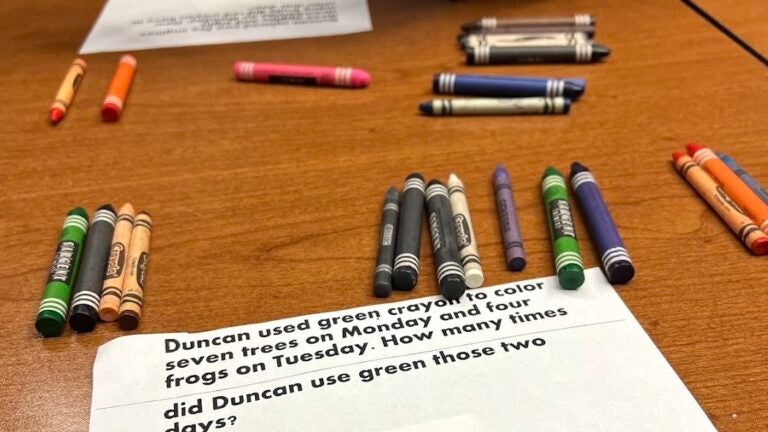
Manipulatives Bring Learning to Life for ReadersPLUS Leaders
While basketball fans celebrate March Madness on the courts, ReadersPLUS has introduced its own version of “madness” that’s scoring big wins for literacy and math tutoring this semester. A new initiative called “Manipulative Madness” has transformed leadership staff meetings into hands-on learning labs where student leaders experience teaching tools directly before sharing them with their site’s tutors.
This practical approach means each leadership meeting now begins with a demonstration of a specific “manipulative,” a physical object that helps make abstract concepts concrete for young learners. Leaders don’t just discuss these tools, they actively use them, just as their elementary school students will.
“The purpose of Manipulative Madness was to get the student leaders actively engaged in a hands-on lesson involving a manipulative so that they can then do the same for their tutors during their staff meetings,” explains Beth Levinson, ReadersPLUS Program Administrator. “We all know that doing something is very different than just hearing or reading about it, so we really wanted to encourage that interactive component during our meetings.”
During a recent session, student leader Britney Garcia introduced the sensory bin as a versatile teaching tool. After reading “ABC” by Dr. Seuss, participants dug their hands into sand-filled bins to locate and form words with hidden letter tiles and thus experiencing the same tactile discovery their tutor’s young students would enjoy.
Another meeting featured Nataly Lozano presenting a lesson built around “The Day the Crayons Quit.” The popular children’s book served as a springboard for both social-emotional learning and mathematics. Lozano demonstrated how the story creates space for children to discuss times they felt unseen or unappreciated, like the crayons in the book, before using the crayons for hands-on addition and subtraction activities.
The initiative has showcased an impressive variety of manipulatives, from UNO cards and conversation cubes to seasonal items like cardboard hearts around Valentine’s Day. Each demonstration gives leaders practical experience they can immediately translate to their staff meetings with their tutors.
The ripple effect of Manipulative Madness is already spreading throughout the program. Sophia Da Costa, ReadersPLUS Coordinator for Lenicia B. Weemes Elementary, was so inspired that she created a “manipulative speed-dating” exercise for her site’s tutors.
“It was our first staff meeting with everybody, and they were already going to have to start lesson planning,” Sophia explains. “I know that what you do at training is helpful, but it’s not enough in terms of examples and resources at your immediate disposal.”
Her innovative approach placed tutors across from each other with manipulatives between them. Each pair had about five minutes to brainstorm creative uses for their materials before rotating to a new partner. The exercise sparked ideas like turning sensory bins into spelling competitions or using familiar objects in unexpected ways.
“There were a lot of benefits,” Sophia reflects. “It helped new tutors discover available resources, refreshed veteran tutors’ memories, and encouraged collaboration through hearing ideas from others.” Perhaps most importantly, it created natural conversations between tutors who might not otherwise have connected.
“Otherwise, I can’t think of a single reason why they would have talked to each other,” she notes. “The dynamic in the room was something I really enjoyed – it wasn’t just one conversation, but multiple conversations happening throughout the space.”
By experiencing these activities as learners, the ReadersPLUS leadership team gains deeper insights into how physical objects can transform abstract concepts into engaging learning experiences. Through Manipulative Madness, the program ensures that the powerful teaching approach of learning through play continues to enrich tutoring sessions across all its sites.